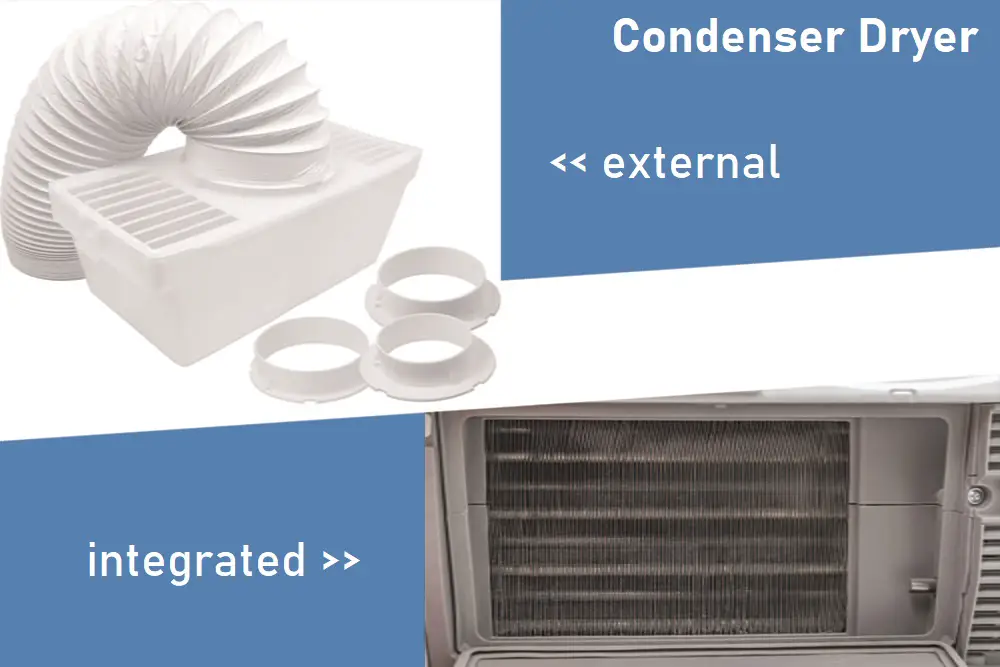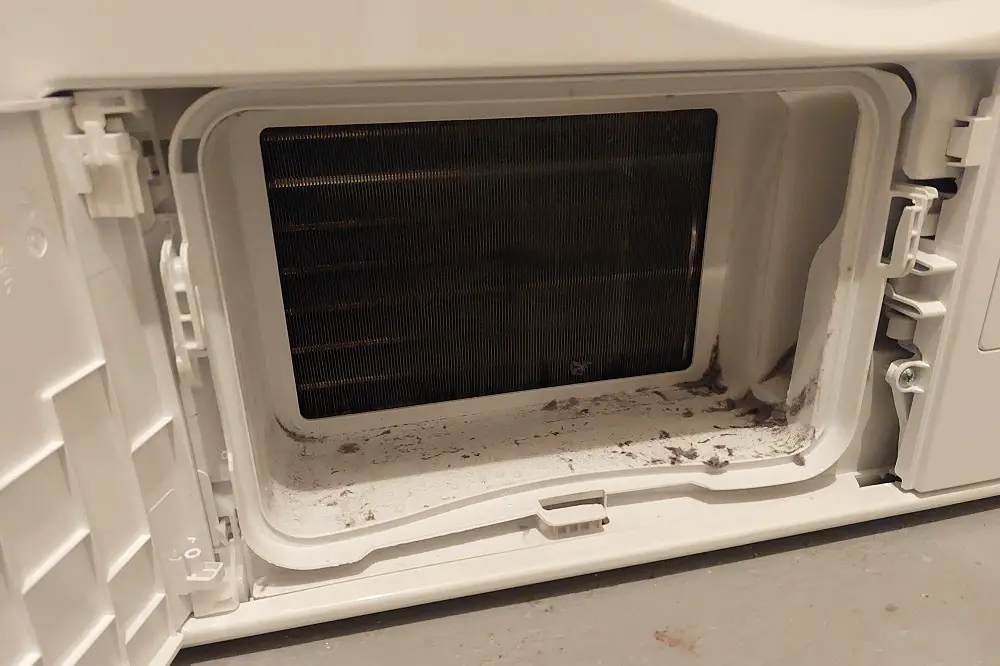When it comes to drying clothes, doing so in a tumble dryer can cause them to shrink for a number of factors. This article will help you understand how these different factors come into play, and what you can do to prevent clothes from shrinking in the dryer.
A tumble dryer does shrink clothes because the heat and movement constrict the fiber. The rapid loss of water is very stressful for natural fabrics and should be conducted with a sensitive method to avoid shrinkage and extend the lifespan.

We’ll explain how tumble dryers cause clothes to shrink and explore the reasons behind the shrinkage. We’ll then guide you through the many ways you can avoid shrinking your clothes.
Table of Contents
Do Clothes Shrink In Tumble Dryers?
Most clothes are at risk of shrinking in tumble dryers, which depends on the material they’re made of, the applied temperature, and the duration. Natural fiber as wool and cotton are most vulnerable while synthetic items can sustain higher temperatures.
More often than not, tumble dryers, like washing machines, can lead clothes to shrink and their fading.

This can occur for many reasons, and we’ll explore those in the following section. In short, some types of fabric are not meant for tumble drying and even those fabrics that can be tumble-dried can still be at risk if the necessary precautions are not taken.
Luckily, there are steps you can take to prevent that. Still, whenever possible, you should consider another drying method such as hanging your clothes on the washing line or radiator; air drying is much more natural and gentle and is unlikely to affect your clothes’ fabric.
Why Does A Tumble Dryer Shrink Clothes?
A tumble dryer shrinks clothes because of the combination of the agitated air and the movement of the tumbling. Air, temperature and movements have a direct effect on the materials’ molecules, leading to tears, color loss, and shrinkage. The movement and heat constrict the fibers on a molecule level, resulting in a total shrinkage of the item.
Not All Fabrics Are Born Equal
Some fabrics are more susceptible to shrinkage than others. Most clothing items are made from stretched-out fibers that can often be constricted when tumble-dried.
In particular, Wool garments and lighter fabrics such as cotton and silk are at risk.
High Heat Can Be Destructive
Most types of fabric, especially lighter materials, can be shrunk when exposed to the tumble dryer’s high heat. The fabrics are constricted and relaxed due to the forced air generated by the dryer and the lack of moisture in the fibers.
Too Much Movement Doesn’t Help.
The constant rotation in the tumble dryer can also damage clothes, though to a lesser degree. Coupled with high heat, clothing fibers can end up being too constricted, resulting in shrinkage.
What Fabrics Shrink With Tumble Drying?
Technically, all types of fabric can be affected by a tumble dryer. Natural and lightweight fabrics such as wool, cotton, suede, silk, and other natural materials are more likely to sustain damage from tumble drying. The reason for this is that they are more susceptible to tears, transfer of color, and even shrinkage because of the nature of the material.

Tumble drying tends to cause shrinkage more than natural drying does with these materials, and this has something to do with the hot air combined with the action of tumbling within the dryer.
While it’s advised to stay away from the tumble dryer when it comes to wool garments, you can still tumble dry most clothing items and make sure they come out without shrinking.
What Can You Do To Avoid Shrinking Clothes?
You might resort to the tumble dryer to dry your clothes for a lack of better options. The good news is that clothes are not destined for destruction in tumble dryers.
Here is how you can properly use the tumble dryer and avoid shrinking clothes.
Dry At A Low Heat
You’ve seen how high heat can greatly damage textile fibers. Opt for the lowest heat setting in your tumble dryer to prevent this. It will take the clothes longer to fully dry, but they’ll remain undamaged.
A heat pump dryer is much better than a regular condenser dryer. It uses a much lower temperature to dry your clothes, thus offering better protection. You might consider getting a heat pump dryer if you don’t yet have one.
Heat pump dryers are significantly more expensive, but they are also definitely worth the investment, especially if you rely heavily on tumble dryers and look at lower energy costs.
Wash In Cold Water
Before exposing your clothes to the tumble dryer’s heat, it is recommended that you wash them in cold water; warm water is much more likely to cause shrinkage. If you’re using a washing machine, set it to a cold water setting of around 30°C (max 40°C).

The same applies to hand-washing your clothes; it’s always better to avoid hot water.
Pay Attention To The Clothing Label
You should always read the care label before deciding whether or not to tumble dry your clothes.
You’ll probably find that some of your clothes must not be tumble dried, in which case you should look for another option.
Additionally, different materials require different drying conditions. So, pay attention to every clothing label before deciding how to proceed.
Don’t Choose A Long And Hot Drying Cycle
The longer your clothes stay in the tumble dryer with high temperature, the more damage will be done. Your clothes should not be subject to heat and constant motion in the appliance for too long. If you can reduce the heat in exchange for a longer cycle that’s fine.
Of course, some heavier clothes can come out slightly damp by setting up a short drying cycle at low heat. This is perfectly fine; simply take them out and hang them on the washing line or somewhere in your home until they are fully dry.
This will reduce the risk of shrinkage and drying time heavily.
Don’t Leave Your Clothes In The Tumble Dryer
Once the drying cycle finishes, you should remove your clothes from the appliance as soon as possible. Keeping them in a warm tumble dryer increases the risk of shrinkage.
Read more on Leaving Tumble Dryer On Overnight: Is It Safe Or Should You Worry?
Sort Your Laundry Before Drying
After you wash your clothes, it’s essential to sort them before you load them into the tumble dryer. This will make tumble drying safer and more efficient.
Clothing items with different weights don’t take the same time to dry. By putting them together, the heavier clothes will come out too damp. Worse yet, the lighter clothes might be overdried and come out several sizes too small.
Final Thoughts
Tumble dryers can shrink your clothes for a variety of reasons. Some fabrics are more prone to shrinkage than others and better off dried without the tumble dryer. For most other fabrics, it’s important to take the necessary precautions to prevent shrinkage.
Be careful with your clothing, and you will ensure your clothes will survive the drying process and stay in their best shape and color.


